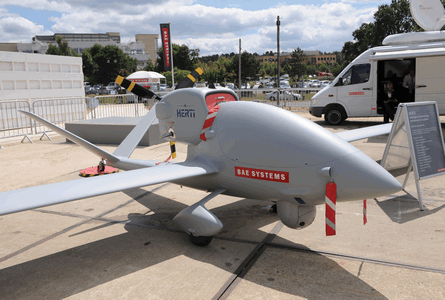The UK Ministry of Defence wants to develop a robotic urban operations capability as fast as possible with an approach similar to that taken with its BAE System's Herti and Mantis unmanned air vehicles.
While UK armed forces use the Lockheed Martin Desert Hawk and General Atomics MQ-9 Reaper (Predator B) for intelligence, surveillance, target acquisition and reconnaissance (ISTAR) and ground attack they have no company-level capability for urban warfare.
The MoD is hoping its Grand Challenge competition, which started this month, will deliver a such a capability that can be rapidly evolved and deployed. The Grand Challenge is to devise highly autonomous vehicles capable of identifying threats including marksmen, roadside bombs and armed militia.
 |
|---|
BAE's Herti was deployed in-theatre to Afghanistan as part of its development as a reconnaissance and surveillance tool, and the MoD is likely to repeat that process with the Mantis UAV, which could be armed with MBDA Brimstone missiles or Raytheon Paveway bombs.
Of the nine teams that competed for the Grand Challenge's RJ Mitchell trophy, all offered UAVs, with only two of them being fixed wing six were helicopters and one a coanda effect vehicle.
"We never said to the competitors to use a UAV. I think we are seeing here [at the challenge] the next generation of vehicles," says the MoD's science and technology strategy director general Philip Sutton, "if we find what we need [for urban operations] we will drive it through [to deployment]."
A priority is a high level of autonomy to make it easy for soldiers to use in the field. Sutton adds that any winning system is likely to be given to the infantry trials and development unit for testing with soldiers. He expects changes to ensure technology is sufficiently rugged. The Grand Challenge winner will be announced on 19 August.
Source: Flight International



















